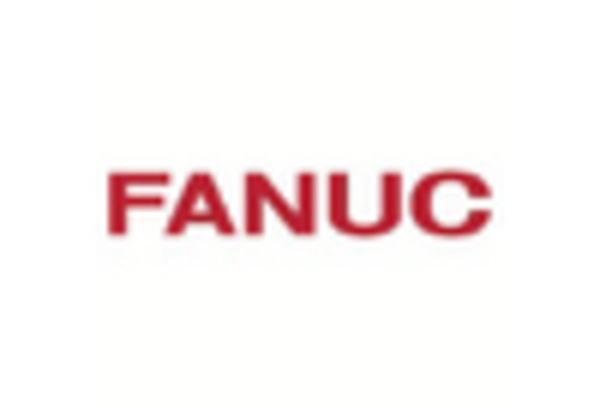Expansion of Robotics in Emerging Markets
The Robotic Automation Actuator Market is witnessing expansion in emerging markets, where the adoption of robotics is gaining momentum. Countries in Asia-Pacific and Latin America are increasingly investing in automation technologies to boost productivity and economic growth. This shift is driven by the need to modernize manufacturing processes and improve competitiveness on a global scale. Market data indicates that the robotics market in these regions is expected to grow at a rate of over 15% annually, with actuators playing a crucial role in this transformation. As businesses in emerging markets seek to implement robotic solutions, the demand for reliable and efficient actuators is likely to increase, presenting significant opportunities for manufacturers in the actuator sector.
Technological Advancements in Actuator Design
Innovations in actuator technology are significantly influencing the Robotic Automation Actuator Market. The development of smart actuators, which incorporate sensors and feedback mechanisms, allows for enhanced control and adaptability in robotic systems. These advancements enable actuators to respond dynamically to varying operational conditions, thereby improving overall system performance. Furthermore, the introduction of lightweight materials and miniaturized components has led to more compact and efficient actuator designs. Market data indicates that the segment of smart actuators is expected to witness substantial growth, potentially reaching a market share of over 30% by 2026. This trend underscores the importance of continuous innovation in actuator technology to meet the evolving demands of automation applications.
Rising Demand for Automation in Various Industries
The Robotic Automation Actuator Market is experiencing a notable surge in demand as industries increasingly adopt automation to enhance productivity and efficiency. This trend is particularly evident in sectors such as automotive, electronics, and food processing, where the need for precision and speed is paramount. According to recent data, the automation market is projected to grow at a compound annual growth rate of approximately 10% over the next five years. This growth is driven by the need to reduce labor costs and improve operational efficiency, leading to a greater reliance on robotic systems equipped with advanced actuators. As companies seek to remain competitive, the integration of robotic automation solutions becomes essential, thereby propelling the demand for actuators that can deliver high performance and reliability.
Growing Emphasis on Safety and Compliance Standards
Safety and compliance are becoming increasingly critical in the Robotic Automation Actuator Market, as organizations strive to meet regulatory requirements and ensure safe working environments. The integration of actuators in robotic systems must adhere to stringent safety standards, which influences the design and functionality of these components. Manufacturers are focusing on developing actuators that not only enhance operational efficiency but also incorporate safety features such as emergency stop mechanisms and fail-safe designs. This trend is likely to shape the future of actuator development, as companies prioritize compliance with safety regulations. Market analysts predict that the demand for safety-compliant actuators will grow, potentially accounting for a significant portion of the market by 2027, as industries increasingly recognize the importance of safety in automation.
Increased Investment in Robotics Research and Development
The Robotic Automation Actuator Market is benefiting from heightened investment in research and development activities aimed at advancing robotic technologies. Governments and private entities are allocating significant resources to foster innovation in robotics, which includes the development of more sophisticated actuators. This influx of funding is likely to accelerate the pace of technological advancements, resulting in more efficient and capable robotic systems. Recent reports suggest that global investment in robotics R&D could exceed 20 billion dollars by 2025, reflecting a strong commitment to enhancing automation capabilities across various sectors. As a result, the demand for high-performance actuators that can support these advanced robotic systems is expected to rise, further driving market growth.


















Leave a Comment